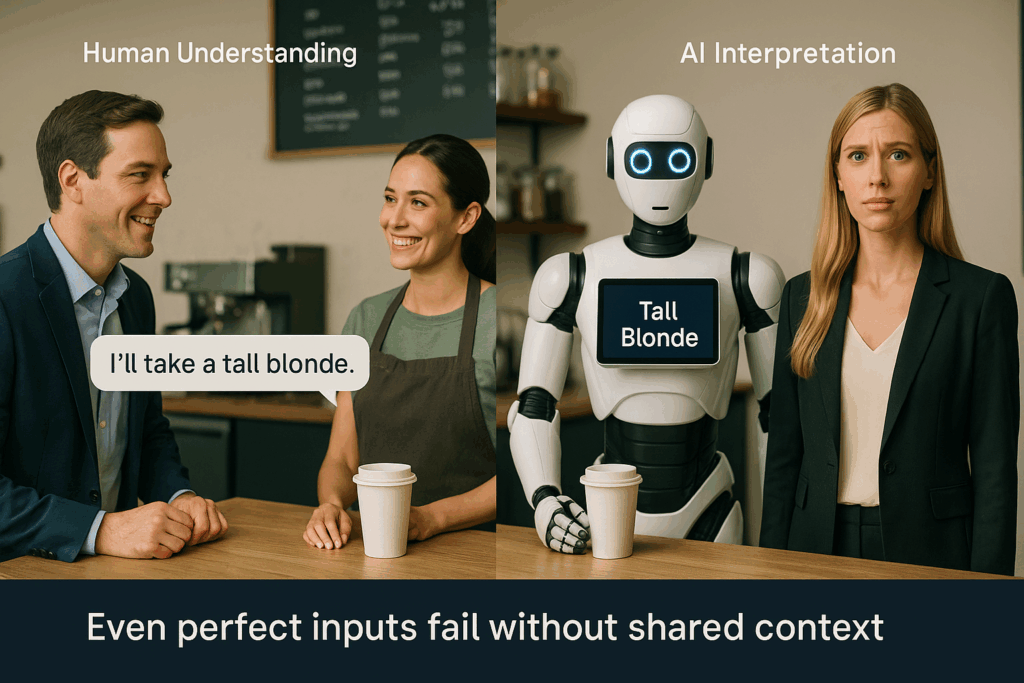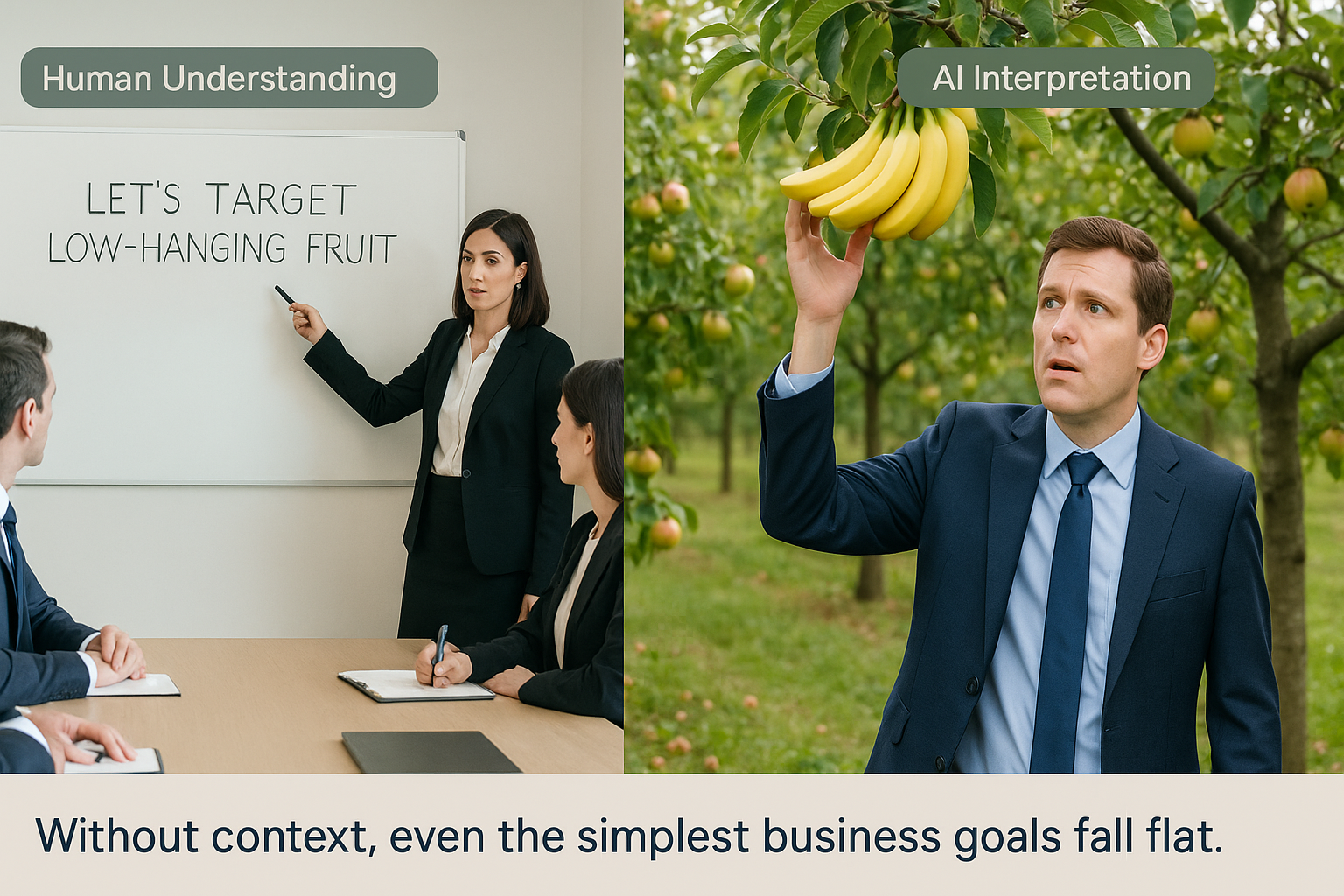Why Smart Business Strategy Demands Smarter AI Understanding
AI has never been more accessible. From marketing copy to customer service to code generation, large language models (LLMs) and automation tools are rewriting what’s possible. But the dirty secret in every C-suite conversation is this:
Even the most advanced AI fails without the right context.
It’s not a technical flaw. It’s a strategic oversight.
In meetings, we talk in shorthand. “Let’s target low-hanging fruit.” To a human team, that’s obvious: prioritize easy wins. To an AI system? It may grab a ladder and go looking for bananas.
In one logistics client, poor AI labeling of inventory tags led to re-orders of supplies already in transit—costing $10M in unnecessary spending across 18 months. That AI worked accurately—it just didn’t understand the operational nuance. The cost of misunderstanding isn’t a rounding error. It’s a strategic risk.
Why AI Accuracy Is Not Enough
We obsess over model accuracy, BLEU scores, and benchmarks. But if a model gets the right answer to the wrong question, it’s useless—or worse, harmful. AI doesn’t need to be more accurate. It needs to be aligned with the business context.
AI Needs More Than Data — It Needs Understanding
Let’s be blunt: AI systems don’t “understand” your business.
They interpret text. Predict next words. Follow training.
But they don’t know your customer journey, your supply chain quirks, or your compliance boundaries… unless you give them the right context at the right moment.
This is why most “AI pilots” fail quietly—producing demo-quality results that never scale to production.
Your Business Logic Is Not Self-Explanatory
Most teams assume their workflows, taxonomies, or decision rules are “obvious.”
But AI doesn’t inherit institutional knowledge. It doesn’t intuit edge cases.
You have to translate business logic into structured context—through ontologies, embeddings, reference patterns, or real-time signals.
Auxiliary Digital specializes in building that bridge.

— Even perfect inputs fail without shared context.
Take another example: A coffee order. “I’ll take a tall blonde.” Humans know it’s a roast. A context-less AI might present a tall blonde woman. This isn’t just humorous. It’s expensive.
Misinterpreted inputs lead to downstream failures in automation, personalization, recommendation, risk analysis, and more.
Context Is the New Interface
You used to design interfaces for users.
Now, you need to design context for AI. This means shaping how data is presented, structured, and interpreted—not just for humans, but for the models that drive automation, insights, and recommendations.
The businesses succeeding with AI aren’t feeding it more data. They’re feeding it a better context.
Why Business Strategy Must Drive AI Context
If your AI initiative is disconnected from how your business actually operates, it will fail—quietly, expensively, and slowly.
Context is what makes:
- A chatbot sound like your brand
- A dashboard show meaningful trends
- A system make proactive, intelligent decisions
- A human trust the results
Without it, you’re not deploying intelligence. You’re deploying noise.
The businesses succeeding with AI aren’t feeding it more data. They’re feeding it a better context.
This Is Where Auxiliary Digital Comes In
At Auxiliary Digital, we build context-driven AI systems. That means:
- We model the context explicitly—not just the data, but the intent, state, and structure of the business logic.
- We integrate AI into the business flow, not the other way around.
- We develop tools that route the right data to the right model at the right time.
This is not about “prompt engineering.” It’s about architecting clarity into every layer of the solution.
We’ve delivered context-aware solutions for automotive, healthcare, manufacturing, and financial services—where the cost of misinterpretation is high and the stakes are real.
Next Steps: Operationalizing Context
Auxiliary Digital partners with organizations to embed context at every level:
- From data architecture that separates noise from signal
- To AI governance frameworks that preserve accuracy over time
- To real-time orchestration of models across cloud, edge, and platform boundaries
Our goal isn’t to build another tool. It’s to make AI work inside your world—accurately, intelligently, and contextually.
Let’s stop building AI that misunderstands us.
Let’s build AI that knows what we mean, not just what we say.



